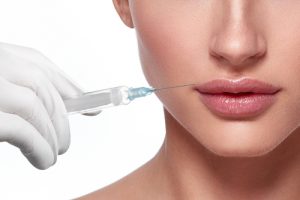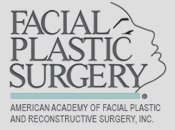Posted February 06, 2019 in Facial Injections
Reversing visible signs of aging that have developed on your face without having to go through extensive plastic surgery can be accomplished through the use of various injectable fillers and neuromodulators (Dysport® and BOTOX® Cosmetic). Facial fillers have become one of the most popular and recommended alternatives to surgery. Dr. Persky is a non-invasive facial rejuvenation expert, practicing with the original fillers (collagen) and ‘toxes since 1985. In Dr. Persky’s hands these treatments are quick, easy, safe, and effective. Although Dysport®, BOTOX® Cosmetic, and injectables can provide patients with excellent and long-lasting results, unfortunately, even non-surgical procedures can come with risks and side effects, one of the most common adverse effects is bruising. There is an old adage, “You bruise ‘em, you lose ‘em!” Dr. Persky does everything possible to minimize bruising in his patients. Thankfully, there are techniques and protocols to minimize this bruising during your treatment.
If you are interested in Facial Filler Injections, please schedule your consultation with Dr. Persky by calling (818) 918-9252. Join our newsletter to receive special offers & promotions exclusively available for subscribers.

What Are Cannula Needles?
Bruising is known as one of the most common complications that come with facial injections. While some patients may experience minor bruising after their treatment for only a few days, others with sensitive skin may not be so lucky. Fortunately, Dr. Persky has found a way to reduce bruising by using the smallest needles possible, and when indicated, a blunt tipped needle not a sharp cannula.
A cannula tip is blunt and round-tipped, it does not cut sharply through the skin, blood vessels, or nerves. Unlike sharp needles, a cannula is much less likely to pierce blood vessels, which result in bruising. Likewise, they are less likely to cause pain by piercing a nerve during the injection. Cannulas may be longer than most needles and can easily reach more areas with fewer entry points into the skin. Because they are less likely to pass into your vein or artery, cannulas cause less bruising and swelling. Most importantly, cannulas add a great deal of safety to your facial filler injections. One of the most dreaded complications of injectable fillers is vascular occlusion. Vascular occlusion occurs when a filler is inadvertently injected directly into an artery or vein. The blocked artery can cause tissue loss, blindness, or even stroke. The chances of entering a blood vessel with a cannula are miniscule compared with a needle. It is critical for patients to choose their injecting physician based on the injecting physician’s expertise, knowledge (particularly of facial vascular anatomy), experience, and skill to minimize the chances of injectable filler complications. Fortunately, Dr. Persky, with his years of facial plastic surgery experience, knows the facial blood vessel anatomy and uses that knowledge to minimize adverse injectable events. In addition, Dr. Persky possesses natural artistic vision to create natural results.
Your Consultation
To minimize bruising during your facial injection treatment, we begin with our initial consultation. Patients with a history of any previous bleeding problems, medications that have “thinned” their blood, or those who struggle with high blood pressure may not undergo treatment until these issues have been evaluated and treated. You will be asked to stop all medication that can increase your chances of bleeding for at least one to two weeks. These medications include:
- Aspirin
- MOTRIN®
- Aleve®
- Advil®
- Anything with Ibuprofen as an ingredient
How Does It Work?
Since the tip of a cannula is rounded and not sharp, it cannot puncture the skin. Therefore it is necessary to use a needle of equal diameter to make a small entrance puncture in the skin through which the blunt cannula is passed. During your treatment, the round, blunt tip of the cannula needle pushes blood vessels and sensory nerves aside while injecting the filler. The opening on a cannula is located toward its tip on the side. While cannula use takes a little bit more time in inexperienced hands, it is well worth the decrease in bruising. With Dr. Persky’s years of experience with cannula use, he finds that not only are complications much less likely, but that the treatments are quicker and much less painful than with standard needle use.

Recovery
If any bleeding occurs during your treatment, manual pressure will be maintained for a few minutes on the treated area. Ice may also be used to reduce the bleeding. If Dr. Persky suspects any possibility of bruising, he will place a small clear Arnica® gel patch on the area. You will be asked to wear the patch for at least six hours and then replace the patch with a new one before you go to bed.
To learn more about cannula needles and to determine if injectable fillers are right for you, please call our office at 818-501-FACE or schedule a consultation with us online today!




